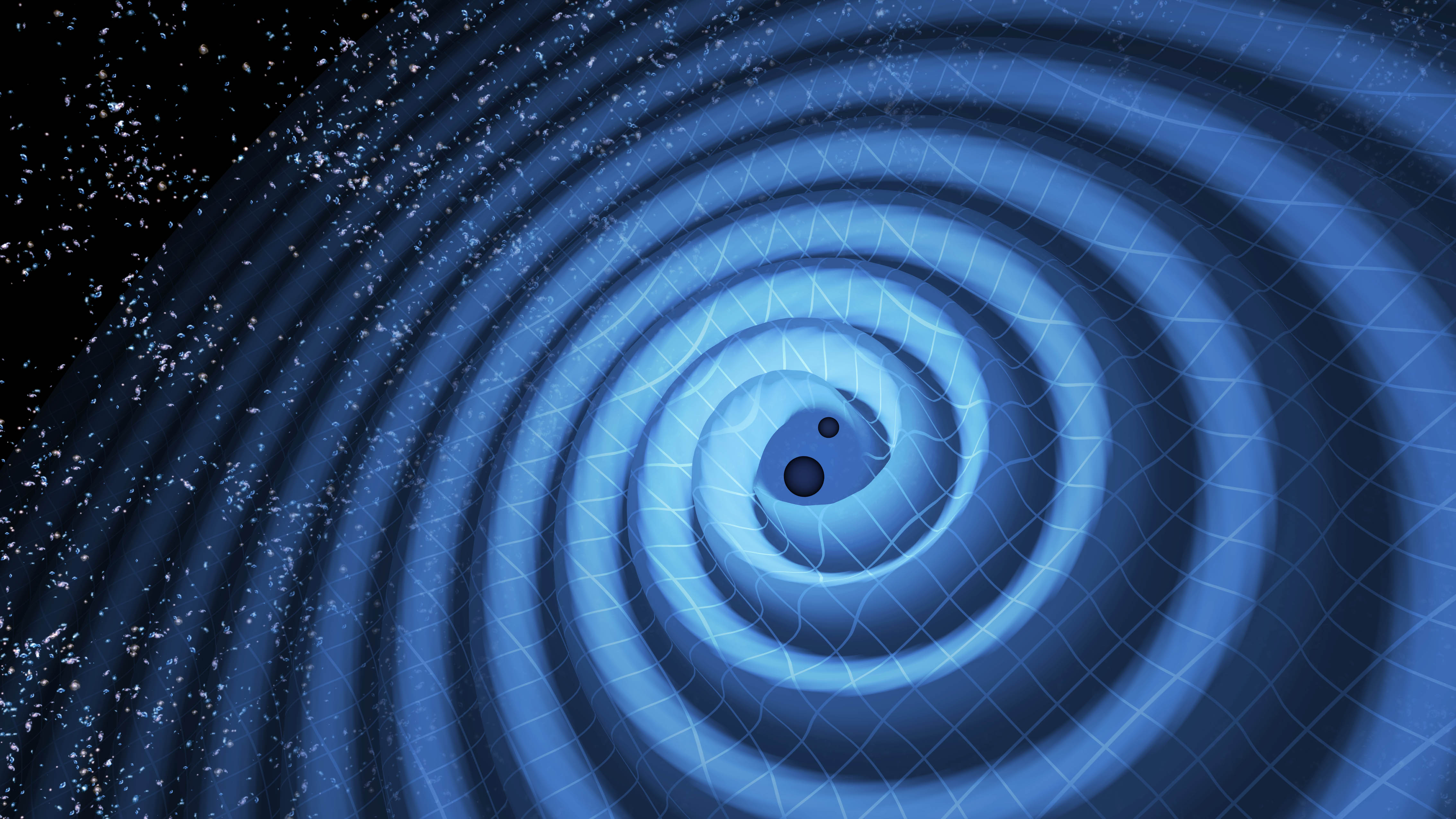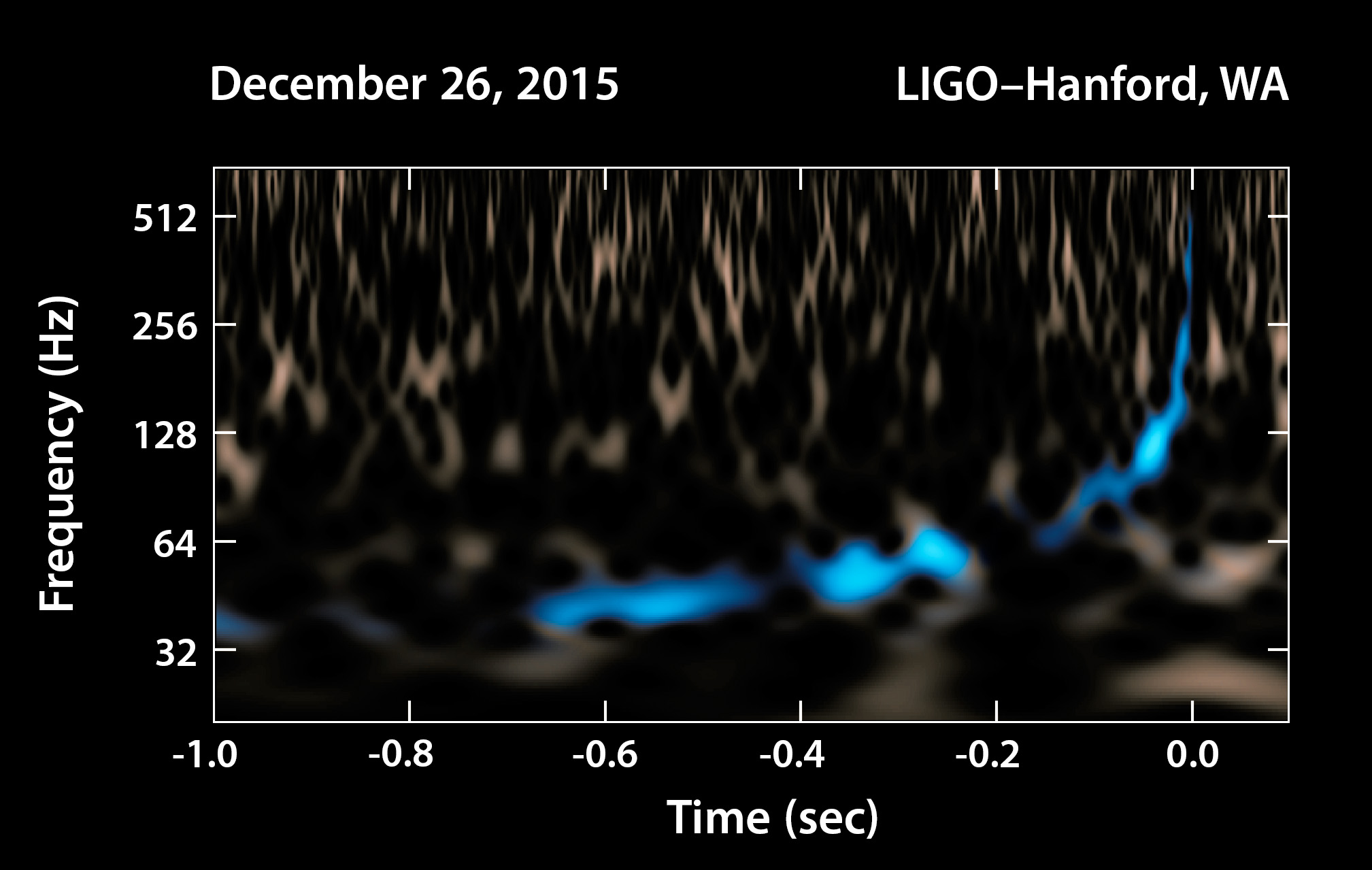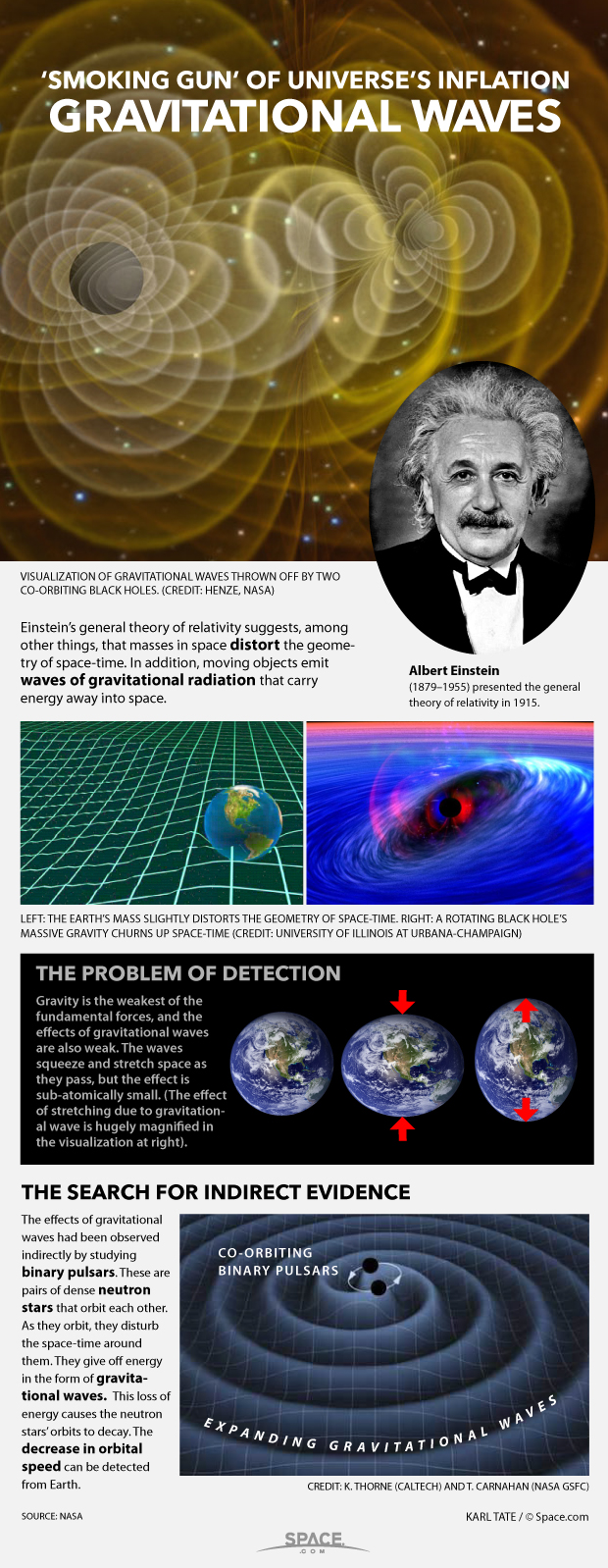Gravitational Wave Detector Finds Double Colliding Black Holes — Again (Woot!)
Distortions in the fabric of space-time, which were predicted by Albert Einstein a century ago, have been directly detected for the second time.
Approximately 1.4 billion light-years from Earth, two black holes spiraled around each other and collided, creating ripples in the fabric of space-time. These ripples, known as gravitational waves, arrived at Earth in December 2015, and were detected by the Laser Interferometer Gravitational Wave Observatory (LIGO).
The LIGO collaboration announced the finding today (June 15) during a news conference at the 228th meeting of the American Astronomical Society (AAS) in San Diego. The gravitational wave signal — officially known as GW151226 — was detected by LIGO on Dec. 25, 2015, at 11: 38 p.m. EDT (0338 a.m. GMT on Dec. 26). [Again! Gravitational Waves Detected from 2nd Black Hole Collision]
In the U.S., many of the LIGO scientists were still been celebrating Christmas Day when the news arrived, and it "destroyed a few family dinners," said Vicky Kalogera, an astrophysicist at Northwestern University and a member of the LIGO collaboration, in an interview with Space.com.
LIGO made the first-ever direct detection of gravitational waves in September 2015, and team members announced that finding in February. That first gravitational wave signal was also created by two colliding black holes.
"The second discovery means the first discovery was not a one-off, 'we got lucky,' kind of thing," David Reitze, current executive director of the LIGO Laboratory, told Space.com. "If I could encapsulate what the second discovery means … it's that LIGO is for real."
LIGO scientists waited until now to announce the second detection because they had to make sure that it was real, and that it was caused by a black hole collision, team members said.
Breaking space news, the latest updates on rocket launches, skywatching events and more!
Warped space
Einstein showed that space is not a fixed stage on which cosmic events play out, but rather a flexible fabric, like a 3D rubber sheet. Space can be warped by gravity, so the mass of the Earth, for example, creates a curve in space. (Einstein also showed that time is par of this universal fabric, and he combined space and time into the single universal feature called space-time).
Black holes are the densest objects in the universe, and create intense curves in space-time. When two black holes move around each other very quickly, those curves in space become ripples, and move outward.
The black holes that collided 1.4 billion years ago weighed about 14.2 and 7.5 times the mass of the sun, according to a paper detailing the new finding, published in the journal Physical Review Letters this week. (The gravitational wave signal detected by LIGO in September was created by two colliding black holes with masses of about 29 and 36 times that of the sun.) [How Gravitational Waves Work (Infographic)]
Kalogera said the masses of the black holes provide clues about how they formed. Lighter black holes — those around 10 times the mass of the sun — very likely formed from two massive stars that lived close to each other, each perhaps siphoning material away from the other in a sort of cannibalistic relationship.
The fate of the two stars most likely followed a pattern seen all over the universe: Eventually the stars ran out of fuel, and their internal engines stopped burning. With nothing to keep them inflated, the stars collapsed. Following such a collapse, most massive stars will explode into a supernova, but at their core, the rapid inward rush of material drives up the internal pressure to the point that it creates a black hole. The gravitational pull of the new object is so intense, even light cannot escape.
The two black holes remain partners even after death, slowly spiraling around each other, eventually colliding. Einstein also showed that mass and energy are two sides of the same coin, and during this black hole merger, a quantity of mass "roughly equivalent to the mass of the sun was converted into gravitational waves," according to a statement from the Massachusetts Institute of Technology, which operates LIGO in collaboration with the California Institute of Technology.
The signal from the newly discovered black holes was slightly fainter than the signal detected in September. The faintness of the signal partly determines how well LIGO can narrow down the location of the event in the sky — the new signal came from somewhere in a region that measures 1,400 square degrees (the full moon is about one-half a degree on the sky). The September signal, which was "louder," came from a region measuring 600 square degrees.
Scientists hope to be able to narrow down the location of future events with the addition of more gravitational wave detectors, including the Virgo facility, located in Italy, which is scheduled to come online in January. The Virgo collaboration consists of 19 European research groups.
A more sensitive detector
LIGO's first detection of gravitational waves back in September came immediately after a significant upgrade to the instruments, which increased LIGO's overall sensitivity. The observatory's detection of two double-black-hole collisions in its first four months of operation after the upgrade suggests that the observatory will be seeing more of these events in the future, Reitze said.
Black holes, true to their name, do not radiate or reflect light. However, in some cases, rapidly moving matter around a black hole will generate light and reveal the monster's presence to astronomers.
But as two black holes orbit around each other, any nearby matter is expected to be flung outward, like a cosmic salad spinner. According to scientists with the LIGO collaboration, that means these types of black hole pairs (those that are about 10 to 100 times the mass of the sun) are not expected to be visible to telescopes and observatories that see light or other particles.
"So far, gravitational wave detectors are the only way to see these kinds of systems," Reitze said. "So that's pretty exciting. I think we've opened up a window on black hole astrophysics that heretofore has not been opened."
(However, Kalogera added that the astrophysics community is open to the possibility that observations of these black hole collisions will reveal surprises, including, perhaps, the discovery that they do create light).
LIGO consists of two facilities, one in Hanford, Washington, and the other in Livingston, Louisiana.
Each detector is an L-shaped structure with arms 2.5 miles (4 kilometers) long. A laser beam shines down each arm from the L's crux, and mirrors at the ends reflect the light back. If a gravitational wave passes through the detector, it warps space-time, lengthening one arm relative to the other very slightly — a change that the detector can pick up.
LIGO has been described by Reitze and other LIGO scientists as "the most precise measuring device ever built," and this sensitivity essentially requires that there be two detectors — a signal must be picked up by both detectors to ensure that it is not a false alarm.
Currently, LIGO is undergoing additional upgrades that will make it as much as 20 percent more sensitive than it was last fall (when the two detections were made), Reitze said. The improvements will allow LIGO to search for signals in a volume of space 1.5 to 2 times larger than before, according to the statement from MIT.
Follow Calla Cofield @callacofield.Follow us @Spacedotcom, Facebook and Google+. Original article on Space.com.

Calla Cofield joined Space.com's crew in October 2014. She enjoys writing about black holes, exploding stars, ripples in space-time, science in comic books, and all the mysteries of the cosmos. Prior to joining Space.com Calla worked as a freelance writer, with her work appearing in APS News, Symmetry magazine, Scientific American, Nature News, Physics World, and others. From 2010 to 2014 she was a producer for The Physics Central Podcast. Previously, Calla worked at the American Museum of Natural History in New York City (hands down the best office building ever) and SLAC National Accelerator Laboratory in California. Calla studied physics at the University of Massachusetts, Amherst and is originally from Sandy, Utah. In 2018, Calla left Space.com to join NASA's Jet Propulsion Laboratory media team where she oversees astronomy, physics, exoplanets and the Cold Atom Lab mission. She has been underground at three of the largest particle accelerators in the world and would really like to know what the heck dark matter is. Contact Calla via: E-Mail – Twitter




